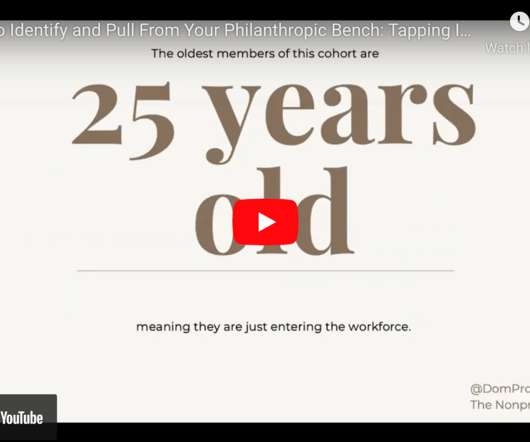Year-End Giving Prep: 21 FAQs Answered by Fundraising Experts
Connection Cafe
AUGUST 1, 2017
I’m a big believer in having conversations across the industry ( check out my podcast, if you haven’t already) to share honest advice about what’s working and what’s not—I feel that it’s one of the best ways for us learn and lift the fundraising profession together. Building year-end content strategies.












Let's personalize your content